I have a view with a clustered index on it.
sometimes, when I update Order table (using EF Core that uses transaction)
UPDATE dbo.Order SET OrderStatus = @orderStatus
INSERT INTO dbo.History VALUES (....) //no relationship to orders tabe
I get errors like
Cannot insert duplicate key row in object 'MyView' with unique index 'MyClusteredIndex'
Rebuilding he view index does not help. When I drop and recreate the indexed view, the same update works.
Any idea what might be causing it?
I'm using SQL Server 2014
I've upgraded from SQL Server 2014 to 2022 Standard Edition and set compatibility level to latest.
View definition:
CREATE VIEW [manufacture].[MaterialNeededForOrdersByIO]
WITH SCHEMABINDING
AS
SELECT Order.ID
OrderedProductMaterials.OrderedProductId,
MaterialEnum.MaterialCode,
Needed = SUM(IIF(Order.STATUS <> 22 AND ISNULL(OrderedProducts.STATUS, 0) <> 22, ISNULL(OrderedProductMaterials.Quantity * OrderedProducts.Quantity, 0), 0)),
NeededAll = SUM(ISNULL(OrderedProductMaterials.Quantity * OrderedProducts.Quantity, 0)),
IsSHV = IIF(Order.CustomerId = 2472 AND OrderedProducts.ProductionDate IS NULL, 1, 0),
IsPT = IIF(Order.CustomerId IN(2566, 2662) AND OrderedProducts.ProductionDate IS NULL, 1, 0),
OrderStatus = Order.Status,
IOStatus = OrderedProducts.Status,
COUNT_ = COUNT_BIG(*)
FROM dbo.Order
INNER JOIN dbo.OrderedProducts ON Order.ID = OrderedProducts.IDZákazky
INNER JOIN dbo.OrderedProductMaterials ON OrderedProducts.ID = OrderedProductMaterials.OrderedProductId
INNER JOIN dbo.MaterialEnum ON MaterialEnum.ID = OrderedProductMaterials.MaterialId
WHERE
--status
((Order.STATUS IN(3, 16, 19, 21, 22) AND ISNULL(OrderedProducts.STATUS, 0) = 0)
OR (Order.STATUS NOT IN(1, 2, 20, 12, 14) AND OrderedProducts.STATUS IN(3, 16, 19, 21, 22))) --end status
GROUP BY OrderedProductMaterials.OrderedProductId,
MaterialEnum.MaterialCode,
Order.ID,
IIF(Order.CustomerId = 2472 AND OrderedProducts.ProductionDate IS NULL, 1, 0),
IIF(Order.CustomerId IN(2566, 2662) AND OrderedProducts.ProductionDate IS NULL, 1, 0),
Order.Status,
OrderedProducts.ProductionDate, OrderedProducts.Status
GO
CREATE UNIQUE CLUSTERED INDEX [IX_MaterialNeededForOrdersByIO] ON [manufacture].[MaterialNeededForOrdersByIO]
(
[MaterialCode] ASC,
[OrderedProductId] ASC
)WITH (PAD_INDEX = OFF, STATISTICS_NORECOMPUTE = OFF, SORT_IN_TEMPDB = OFF, IGNORE_DUP_KEY = OFF, DROP_EXISTING = OFF, ONLINE = OFF, ALLOW_ROW_LOCKS = ON, ALLOW_PAGE_LOCKS = ON, OPTIMIZE_FOR_SEQUENTIAL_KEY = OFF) ON [PRIMARY]
GO
